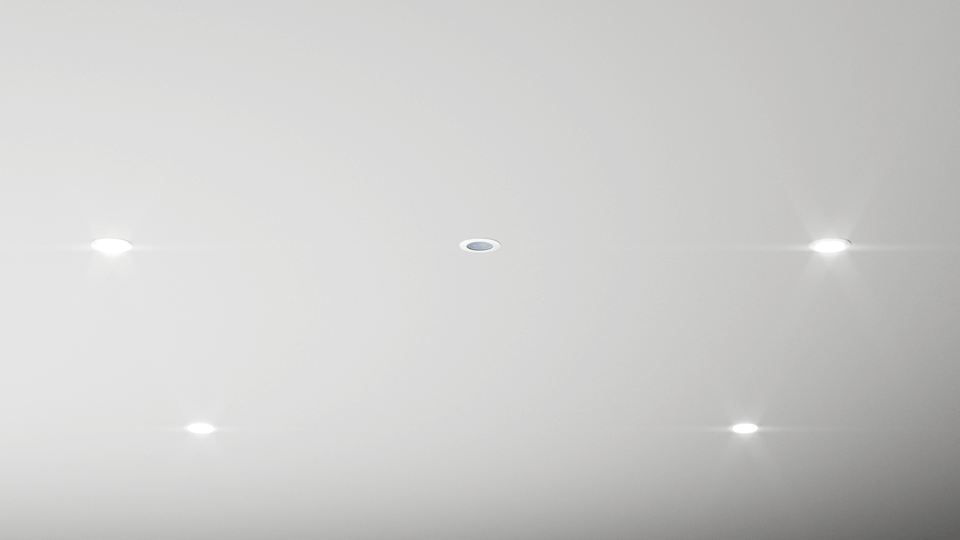
Our Tips for the Perfect Lighting Design
How lighting is used in a space may significantly influence its atmosphere and aesthetics. A well-thought-out lighting scheme enhances any building’s overall ambiance and allure. This blog teaches the essential concepts for creating impactful lighting designs.
How to present every building in the best possible way
Proper lighting significantly improves every room’s comfort, ambiance, and productivity. When planning your lighting strategy, remember to include three unique light sources. This method encourages contrast and sets the tone for a compelling setting.
The Tree Turbo interface connects up to ten master speakers using a star, line, tree, or bus topology. Each master speaker can link up to 20 client speakers. Cabling between master and client, or client to client, must be done using a daisy chain.

Task & ambient lighting
We recommend choosing light sources with adjustable brightness and smooth, continuous dimming for optimal task and ambient lighting. LED Spots and ceiling Lights are ideal for this application.

Indirect lighting
Backlighting occurs when a light source indirectly illuminates a room. LED Strips are ideal for this, as they can be positioned under furniture or in a suspended ceiling to create an outstanding wow factor.

Accent lighting
We advise utilizing eye-catching luminaires like the Pendulum Slim to complete your lighting design. The pendant luminaires feature a sleek, fashionable style and serve as targeted accent lights, directing the eye to particular locations and producing so-called islands of light.
Lighting design made easy.
Regarding lighting design, a popular first question is, ‘How should I space out the LED spotlights in the ceiling?’ Choosing the best distance for ceiling spots begins with considering the room’s height. For a standard ceiling height of 2.6 meters, we recommend placing around two Loxone LED spots per 5 square meters. This configuration ensures uniform and adequate lighting across the space.
How to use built-in presence sensors
The proper spacing of LED spotlights and presence sensors is critical to the room’s overall visual appeal. We recommend placing the Presence Sensor in the center of two LED spots and arranging the LED spots in the standard grid (see the figure to the right). We also recommend not omitting an LED spot in favor of a presence sensor, as this may create the appearance that the LED spot is malfunctioning or the illumination line is uneven.

To create a detailed lighting design for your building, we recommend DIALUX, a fantastic free lighting design program. In it, you may plan, calculate, and visualize your lighting using the Loxone luminaires you intend to use. The software does require the EULUM data for the luminaires you intend to use, which you can obtain free of charge from the Loxone webshop page for the relevant lighting items.
Impressive residential and commercial lighting






The most significant phrases in lighting design
Illuminance (lux)
The amount of light from a source that reaches a particular point is measured in lux of illumination.
Luminous flux (lumen)
Luminous flux refers to how brightly the light source shines. What used to be the number of watts for light bulbs is now known as the lumen value.
Dimmability
Dimmed lighting makes the environment more comfortable, easier on the eyes, and helps conserve energy. Ensure your light source is dimmable; this information will be on the package.
Color Temperature (Celsius)
The light color indicates the color temperature. Color temperatures are classified as warm white up to 3026.85°C, neutral white between 3026.85°C and 5026.85 °C., and daylight white above 5026.85 °C.
Color rendering (Ra)
The colour rendering index shows how accurately colours are reproduced. The more natural the colours, the higher this value. We advise using light sources with a colour rendering index of at least 80 Ra for indoor illumination.
Beam angle
Which area is lit depends on the beam angle. For instance, a beam angle of about 35° is enough for warm white light. Since coloured light interlocks and can be more accurately replicated, we advise using a beam angle of at least 100° for coloured light.
Energy label
The energy label helps you evaluate the light source’s energy consumption. We advise level D (new label) at the very least. The energy efficiency grades currently have seven steps, ranging from A to G.
Easy control of your lights
Fewer buttons, more clarity
Loxone will adjust and modify the illumination automatically, but you may always manually interfere by touching a button. Nevertheless, managing the various lighting circuits with a bank of buttons can be difficult despite the extensive switch possibilities. However, we think the switch should be as easy to operate as feasible. Because of this need, we created the Loxone Switch Standard.


One App for everything
The free Loxone app gives you complete control over the building’s features. Easily manage your lighting from any location at any time. A few clicks are all it takes to change the lighting scene, brightness, or color.




